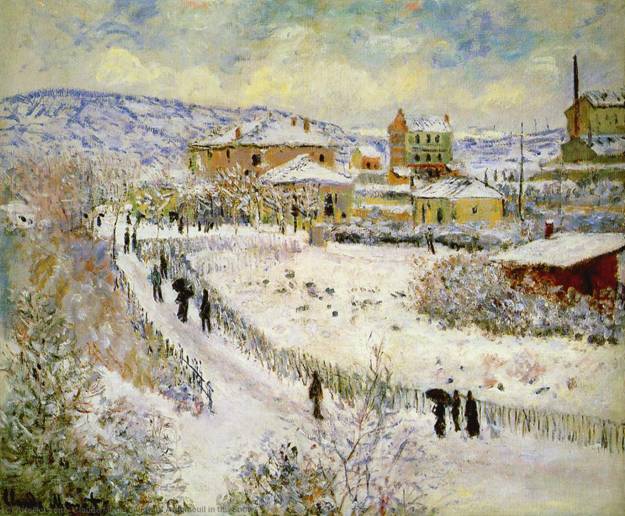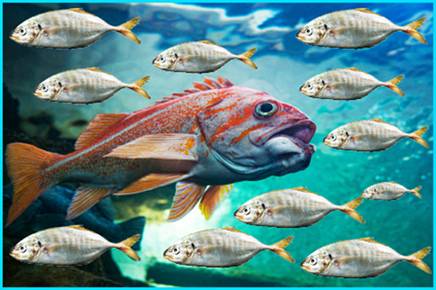|
“Body in a Dream of Spring” —Lynne Knight
Overnight the snow’s blown back
along the fence, baring the field’s dull
grasses, so when the villagers walk
the rutted path toward church, they dream
of spring. Most wear crow-black coats
or dresses, but there’s one coming
the other way headed out øf town
in a green coat, hands deep
in his pockets though he’s free
of all constraint. The villagers greet him
in secret envy of his green coat ways,
then look quickly away as they hurry on
to the sermon, cold traveling up their legs
in defiance of gravity, like unhappiness
that keeps rising. Oh, why can’t they
set it down, why must it get out of bed
with them, slip into their clothes, wait
in their mouths like Amen. And why
should that green-coated one go free.
They’ll resent him less, come summer—
but snow and cold will make them haul
their dark coats from the attic. Then,
with winter eyes, they’ll see him again,
strolling in the opposite direction.
All of them will long to turn and follow.
Next year, they’ll promise, holding
their black coats closer, hurrying on.
Lynne Knight’s “Body in a Dream of Spring” was inspired by Claude Monet’s
“View of Argenteuil,” which she saw, along with other snow paintings, at the
DeYoung museum’s “Impressionists in Winter” exhibit in San Francisco in
1999. Monet’s painting is one of fifteen of the exhibit’s paintings by Monet,
Pissarro, Renoir, Sisley, Caillebotte that inspired the poems in her book Snow Effects (Small Poetry Press, 2000 and 2008).
Poems that focus attention on a visual work of art are called “Ekphrastic”
(from the Greek word “ekphrazein,” which means to describe or proclaim).
Famous ekphrastic poems include Keats’ “Ode on a Grecian Urn,” Rilke’s
“Archaic Torso of Apollo,” and Auden’s “Musee de Beaux Arts.” Those poems
not only vividly describe the urn, the fragmented statuary of Apollo, and the
Brueghel painting “The Fall of Icarus,” they lead to convincing universal
insights inspired by the impressions the art makes on the poets.
Like her predecessors, Knight translates visual into verbal art—color, light,
and texture into story, symbol, and sound:
“As I looked at the paintings” [in the exhibit] she notes, “it seemed to me
that they were more than studies of light. They were variations on a
universal theme: the passing of light into dark, of love into death. I saw
them as meditations on the body in winter, and they led me to my own
version of snow effects.”

Claude Monet, View of Argenteuil, c. 1874, oil on canvas
Knight sees something unusual and easily missed in “View of Argenteuil”
that leads her to translate Monet’s visual work into a convincing narrative
with universal meaning that rings especially true for me, partly because of an
experience I had, with my wife and children, years ago at the Steinhart
Aquarium in San Francisco.
As we approached the circular tank, hundreds of fish were swimming
around in the same direction. Suddenly a fish came into view swimming the
other way. Even our five-year old daughter found this behavior intriguing.
We stood in the same place, transfixed for a while, as the herd of conformists
streamed by; waiting for our rebel to re-appear, and it did so again and
again. Did this fish have a reason for choosing to swim the other way? Did it
know something its brethren didn’t?
Knight’s poem begins with her noticing that although a dozen of the villagers
in Monet’s painting are headed towards the church in the upper right corner,
one is going the other way, passing them by, “headed out of town,” “free of
all constraint.” While the funereal “crow black” coats and umbrellas of his
fellow villagers suggest winter, discomfort, and death, his green coat, his
hands thrust “deep in his pockets” suggest the jauntiness of spring and a
celebration of life.
Once the contrast between Monet’s green and black coated figures is
established, all the elements of his painting fall into place. The communal
“body” of the parishioners, united in their habitual movement towards
church and a sermon that will probably diminish the value of earthly
pleasure is challenged by the joie de vivre of the “green-coated” one’s
individualistic “body.”
For although Monet is outside in the snow, Knight takes us inside the
psyches of his villagers. As they trudge along, bundled up in dark clothing,
they keenly feel “the cold traveling up their legs in the defiance of gravity.”
They too are looking at Monet’s painting and observing the tinges of green in
the grass and foliage that last night’s wind and snow have exposed. Still
sleepy after too early risings, they cannot help but dream of spring.
If we could press a button and animate Monet’s painting, frame by frame, we
would come to the poem’s serial epiphanic moment; for each of the villagers
must briefly become an individual who must pass by and acknowledge the
existence of one who, unintimidated by winter, personifies the spiritual
optimism and buoyancy of spring.
For a fleeting moment each villager feels that it may be possible to break free
of winter—spiritually, if not physically; but, slipping back into the communal
“body,” each will “look quickly away” and “hurry on / to the sermon,”
secretly envying the green-coated one, asking why unhappiness must “get
out of bed with them,” / slip into their clothes, wait / in their mouths like Amen.”
The green coated one’s recurrence towards the end of the poem suggests
that he is more an apparition, more an impulse in the collective psyche,
more symbolic than literal. As the villagers “haul / their dark coats from the
attic”:
with winter eyes, they’ll see him again,
strolling in the opposite direction
He exacerbates the dissatisfactions we all feel at being restricted by our
behavioral patterns, our roads too mechanically taken.

“Habit,” Vladimir observes in Samuel Beckett’s Waiting for Godot, “is a great
deadener.” Marcel Proust saw that, although that’s true, habit also liberates.
As my literary pal, AI, puts it:
“Proust describes the liberating effects of habit by illustrating how it can
provide a sense of comfort, stability, and familiarity in our lives. Through
routine and repetition, habit can offer a sense of security and ease,
allowing individuals to navigate their daily lives with greater efficiency
and confidence. Additionally,Proust suggests that habit can facilitate the
process of adaptation, enabling individuals to adjust to new
circumstances and challenges more readily. In this way, habit can serve
as a form of psychological refuge, providing a sense of continuity and
control amidst the complexities of existence.”
Simply put, human beings have a love / hate relationship with Habit which
leads to the mental tug-of-war that Knight so powerfully explores via
Monet’s painting. As in a dream, the villagers proceed through time’s
seasonal cycle, from light to darkness, winter to spring and back again, trying
to deny how the cycle must end.
The final lines of “Body in a Dream of Spring” poignantly express Knight’s
sympathy for those who long to break free from habit but are too invested in
the comforts and illusions it offers to attempt to change their lives.
We are left shivering with the poet’s villagers as they pass that irrepressible
creature once again who continues to silently suggest that alternative
directions are possible:
All of them will long to turn and follow.
Next year, they’ll promise, holding
their black coats closer, hurrying on.
|